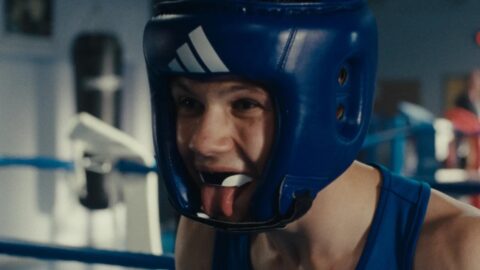Boxing is a very malleable sport, as it can be a metaphor for both healthy masculinity (Rocky [John G. Avildsen, 1976]) and toxic masculinity (Raging Bull [Martin Scorsese, 1980]) at the same time. The purest expression of male rage, literally taking their emotions and reducing them to fisticuffs, it can at once be an outlet for long-buried emotions and a metonym for why men find it so hard to be vulnerable in front of their peers in the first place.
In her debut feature Wild Foxes (2025), Valery Carnoy takes a typically French-realist approach to the material, using the paradoxical nature of boxing to explore the young Camille’s (Samuel Kircher) complicated relationship with the sport and what it says about his stunted view of himself and his supposed friends.
For those who appreciated Adolescence’s (Philip Barantini, 2025) investigation of toxic teenage masculinity but perhaps thought the plot was a little far-fetched, Wild Foxes offers a far more nuanced portrait of what it means to be a teenage boy in the hyper-exaggerated social media era. It relies less on flashy ripped-from-the-headlines shock tactics and more on the granular details of growing up — taking place in a prestigious sports boarding school, a place where every punch, every run and every word is scrutinised for whether or not it can live up to an idealised norm.
At the heart of Wild Foxes is the relationship between Camille and Matteo (Faycal Anaflous), two close friends who learned to box together and then moved to the same school. Camille is very attached to Matteo, even turning down the opportunity to move to a better institution so he can stay with his friend. This proves to be his undoing, however, when the two of them are out feeding foxes in the countryside and Camille falls down a ravine. Narrowly surviving his demise, it leaves his arm with a huge scar down the middle, putting his boxing career in jeopardy.
Miraculously, the wound heals fairly quickly. Yet, despite the doctor giving the young man the all-clear, the pain remains, acting as an obvious metaphor for Camille’s mental struggle, something the other boys, including Matteo and his trainer Bogdan (Jean-Baptiste Durand) take umbrage with; allowing Carnoy to use boxing as a metaphor for the pitfalls of growing up as a man in a society still clinging onto outdated notions of ridid gender roles.
The camerawork isn’t particularly flashy, yet the handheld approach, presented in the Golden Ratio frame, helps keep things intimate, especially when we are taken inside the ring, the camera ducking and bobbing alongside the fighters. What’s more impressive is how Carnoy is able to tease these deeply realistic performances out of her young cast, giving their relationship with Camille a haunting weight — especially when they start teasing him for not living up to their ideals of what a young boxer should be. Pierre Desprats’ score, heavy on atmospheric synth-lines, rising and falling with the action, feels appropriate, blanketing the story in teenage doomer miserablism. The result is a powerful debut that never pulls its punches.
Redmond is the editor-in-chief of Journey Into Cinema.

